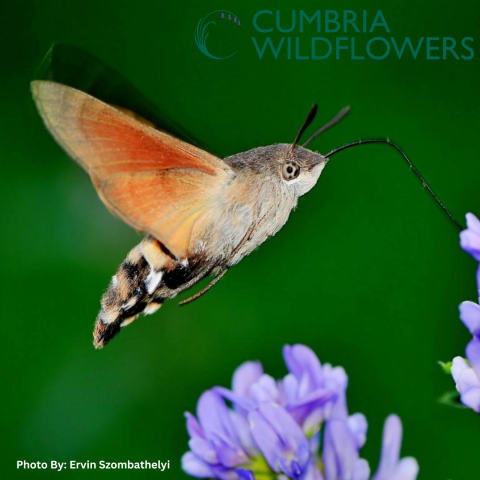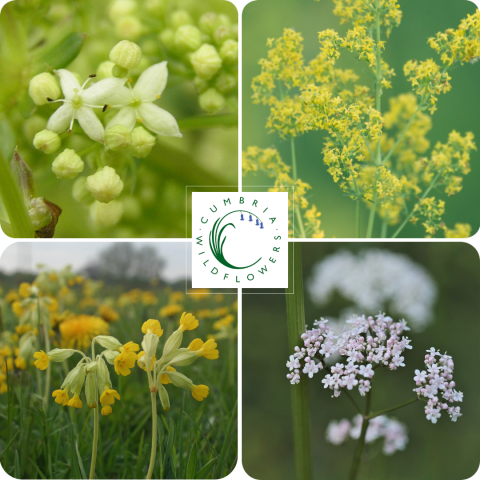Get Ready to Be Amazed by the Hummingbird Hawkmoth: Nature's Astonishing Mimic
Have you ever encountered a creature that's part bird, part insect, and entirely captivating? Meet the Hummingbird Hawkmoth, a fascinating species that's a true master of mimicry. Join us for The Big Butterfly Count and be on the lookout for these beautiful creatures – they might just leave you in awe!
A Moth Like No Other
At first glance, you might mistake the Hummingbird Hawkmoth for an actual hummingbird! But don't be fooled; they are indeed moths with a striking resemblance to their avian namesake. Unlike typical moths, these marvellous insects are day-flyers and possess the ability to feed and hover like hummingbirds. Their elegance and charm set them apart from other moth species, making them a treat to watch.
Not to Be Confused With Hummingbird Hawkmoth
Let's clear up any confusion – Hummingbird Hawkmoths and hummingbird moths are not the same! The Hummingbird Hawkmoth, scientifically known as Macroglossum stellatarum, is primarily found in Europe, Asia, and parts of Africa. On the other hand, the Hummingbird Hawkmoth (genus Hemaris) resides in the New World, including North and South America. While both species belong to the Sphingidae family, they are distant relatives with their own unique characteristics.
Nature's Marvel: Convergent Evolution
Observe a Hummingbird Hawkmoth in action, and you'll notice an astonishing similarity between them and actual hummingbirds. This is a result of convergent evolution, where different species develop similar traits for similar purposes. The long proboscis of the Hummingbird Hawkmoth, like a hummingbird's beak, allows them to sip nectar from flowers, showcasing this fascinating evolutionary phenomenon.
Mastering the Art of "Swing-Hovering"
To avoid potential predators lying in wait, these clever creatures have mastered the art of "swing-hovering" or "side-slipping." With lightning-fast moves, they can swiftly dart from side to side while hovering in the air, evading danger and demonstrating their incredible agility.
Wings That Hum: The Rhythmic Beat
Witnessing a Hummingbird Hawkmoth in action is a true spectacle. Their wings beat at an astonishing rate of 70-80 times per second, creating an audible humming sound as they flutter around flowers. It's a mesmerising sight that showcases their grace and beauty.
Trap-Lining and Routine
Unlike many insects that seem to lack a plan while flying, Hummingbird Hawkmoths are known for their routine behaviour. They engage in trap-lining, repeatedly visiting the same flower beds around the same time each day. This clever strategy allows them to efficiently gather nectar from preferred flowers.
Flowers with a Competitive Edge
Nature is all about competition, and Hummingbird Hawkmoths have their preferences too. They favour flowers with longer, tube-like shapes, where they face less competition compared to other insects like bees. Their long proboscis allows them to reach deep into these flowers, ensuring they have a steady supply of nectar.
Seeing the World Differently
With their intriguing compound eyes, Hummingbird Hawkmoths possess a complex visual system that allows them to see more than we can imagine. These multi-eye insects offer us a glimpse into the wonders of nature's ingenious designs.
Named After Egyptian Felines
The young Hawkmoths, before they transform into moths, bear an uncanny resemblance to ancient Egyptian cats. This striking resemblance earned them their place in the Sphingidae family, also known as Sphinx moths.
Unravelling Their Genetic Secrets
Science has not overlooked the Hummingbird Hawkmoth mystique. Since their discovery in the 1700s, researchers have delved into their genetics, unravelling the secrets hidden in their entire genome. With complete knowledge of their genes, we gain a deeper understanding of their remarkable characteristics.
A Symbol of Good Luck
Beyond their natural wonders, Hummingbird Hawkmoths carry symbolic meaning in various cultures worldwide. Often considered a harbinger of good luck, encountering these tiny marvels can bring a sense of wonder and appreciation for the beauty of the natural world.
So, as you participate in The Big Butterfly Count, keep an eye out for these awe-inspiring Hummingbird Hawkmoth. They are a testament to the wonder and diversity of life that surrounds us, a reminder that even the smallest of creatures can hold profound secrets and capture our imagination. Happy counting!
Want to attract these beautiful creatures to your garden? Why not introduce their favourite food plant, full of nectar, such as Galium and Valerian:
https://www.cumbriawildflowers.co.uk/habitats/hedgebedstrawgaliumalbumplugplants
https://www.cumbriawildflowers.co.uk/habitats/ladysbedstrawgaliumverumplugplants
https://www.cumbriawildflowers.co.uk/habitats/commonvalerianvalerianaofficinalisplugplants
or a mixed selection for more choice and more insect variety:
https://www.cumbriawildflowers.co.uk/habitats/shadearea40plugplantsmix
When you subscribe to the blog, we will send you an e-mail when there are new updates on the site so you wouldn't miss them.




Comments